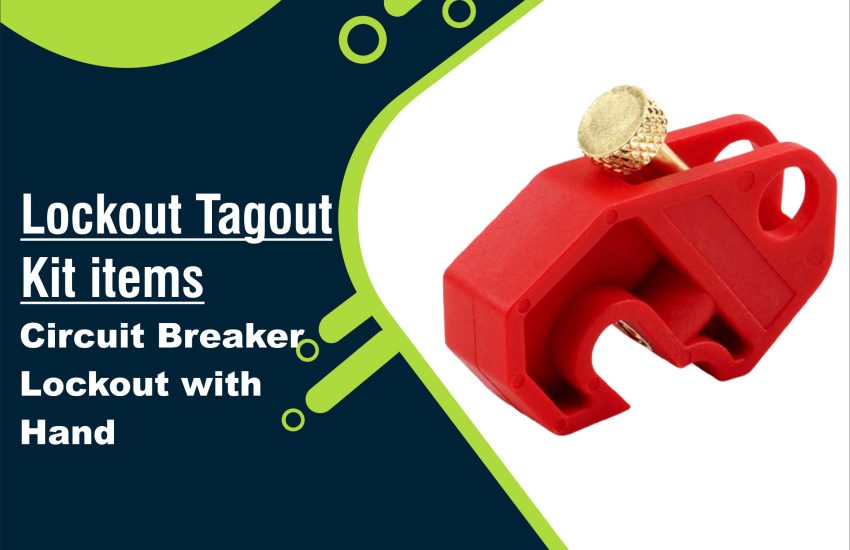Circuit Breaker Lockout with Hand When it comes to electrical safety, circuit breaker lockouts play a critical role in preventing accidental electrical shocks or power interruptions during maintenance. Locking out a circuit breaker ensures that it cannot be turned on until the lockout is removed. This reduces the risk of injury or damage. In this guide, we will explore circuit breaker lockout with hand, covering its importance, types, and how to use it effectively to maximize safety.
What is a Circuit Breaker Lockout with Hand?
A circuit breaker lockout with hand refers to a safety device that physically prevents a circuit breaker from being switched on or off. Typically, workers use these lockouts in industrial or commercial settings where they maintain electrical systems, machinery, or equipment. By applying a lockout, workers keep the breaker in a “locked” position, preventing unintentional activation.
Lockout/tagout (LOTO) protocols control hazardous energy during maintenance activities. A circuit breaker lockout forms a vital part of this system.
Why is Circuit Breaker Lockout Important for Workplace Safety?
- Prevents Accidental Energization
Circuit breakers automatically cut power during an overload or fault. However, during maintenance or repair, workers might accidentally switch the breakers back on. A circuit breaker lockout with hand prevents this from happening, keeping the breaker safely in the off position. - Ensures Compliance with Safety Standards
OSHA (Occupational Safety and Health Administration) regulations require businesses to use proper lockout/tagout devices. By locking out circuit breakers, workers can follow these safety regulations and avoid potential penalties. - Reduces Injury Risk
Electrical accidents can lead to severe injuries or fatalities. Using a lockout device protects workers by preventing accidental exposure to electrical hazards, significantly lowering the risk of electrical shock. - Protects Equipment
Circuit breaker lockouts help safeguard equipment from accidental power surges or electrical damage that can occur when a breaker turns back on unexpectedly.
Types of Circuit Breaker Lockouts
Several types of circuit breaker lockout devices exist, each designed to meet specific needs. The choice of device depends on the type of breaker, the work environment, and the tasks involved. Let’s explore some common types:
1. Hand-Held Circuit Breaker Lockout
A hand-held circuit breaker lockout is a versatile, easy-to-use device that fits over the breaker switch. It prevents the breaker from being flipped accidentally. This device is ideal for smaller to medium-sized circuit breakers.
2. Clamp-On Circuit Breaker Lockout
A clamp-on lockout secures the breaker in the off position with a clamp. Many models have a hand-operated mechanism, making the locking process fast and simple.
3. Universal Circuit Breaker Lockout
The universal lockout is designed to fit various circuit breaker models. These lockouts often feature adjustable hand-operated latches, which allow for quick customization to suit different breaker sizes.
4. Miniature Circuit Breaker Lockout
Smaller in size, the miniature circuit breaker lockout works with compact circuit breakers. Despite its size, it functions effectively to keep the breaker in the off position.
5. Multiple Circuit Breaker Lockout
For larger systems with multiple breakers, a multiple circuit breaker lockout enables you to lock out several breakers at once, ensuring safety when working on expansive panels.
How to Use a Circuit Breaker Lockout with Hand
Applying a circuit breaker lockout with hand is simple, but it’s essential to follow the proper steps to ensure safety. Here’s a step-by-step guide:
1. Identify the Circuit Breaker
First, locate the circuit breaker you want to lock out. Confirm that the breaker is in the “off” position before proceeding.
2. Select the Right Lockout Device
Choose a lockout device that fits the breaker size and type. For standard breakers, a hand-held lockout works well. However, for larger breakers, a clamp-on or universal lockout may be more appropriate.
3. Place the Lockout Device on the Breaker
Secure the lockout device over the breaker. Make sure it is properly positioned to prevent movement. For hand-operated models, ensure that the device is tightly fitted.
4. Apply the Lock
Insert a lock into the device’s hasp or locking mechanism. This secures the breaker in the off position, preventing anyone from turning it on.
5. Test the Lockout
After securing the lockout, try flipping the breaker to ensure the device is in place. The breaker should remain in the off position.
6. Tag the Lockout
Attach a tagout label to the lockout device. This label should include the worker’s name, the date, and the reason for the lockout. This step ensures everyone knows that the circuit breaker is locked out.
7. Remove the Lockout
Once maintenance is complete and it’s safe to restore power, carefully remove the lockout. Always ensure the area is clear of people before turning the breaker back on.
Best Practices for Using Circuit Breaker Lockouts
- Proper Training: Make sure all employees involved in lockout/tagout procedures are trained in the use of circuit breaker lockouts.
- Regular Inspections: Periodically check lockout devices for wear and tear to ensure they function properly.
- Use Personal Locks: Always use your personal lock when securing the breaker. This prevents unauthorized personnel from accessing the lockout.
- Follow OSHA Guidelines: Ensure that all lockout/tagout procedures adhere to the latest OSHA standards.
Conclusion
Circuit Breaker Lockout with Hand is essential for protecting workers when dealing with electrical systems. Locking out breakers ensures they remain off during maintenance, preventing accidental energization. This procedure helps workers stay safe, comply with regulations, and protect both equipment and personnel. By understanding the different types of lockout devices and how to use them, you can create a safer work environment. Always prioritize safety and follow the correct procedures.


